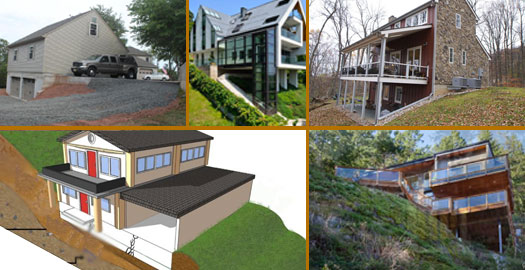
Often times we see settlement in houses constructed on slopes. Many times, the settlement will be almost uniform from approximately halfway around the house where a vertical crack will form. One side of this crack will be level, while the other side will uniformly slope downwards. Many times, this occurs because a portion of the house was constructed into the slope, while a portion of the house was constructed on fill. The portion at the high side of the slope would be constructed into the slope, while the portion at the low side would be constructed on fill, which would have been needed to bring the grade up to level. Many times, by observing the surrounding grades it can be determined where fill may have been used. Foundations founded on excavations into the slope will generally be on firm virgin soil, while foundations founded on fill would be on fill.
It is important that the fill be properly installed and compacted, and that the slope has been assessed for slope stability. If the fill in the slope is properly designed and installed, there is no reason why a house cannot be constructed on a site like this. But many times, the design or installation of fill falls short, resulting in settlement which will require further assessment to determine whether any underpinning is required.
